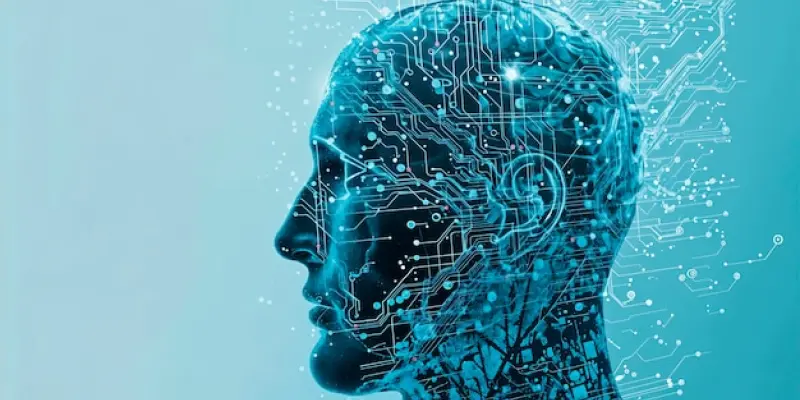In a rapidly evolving digital landscape, new advancements in artificial intelligence continually reshape the way we approach information processing. One significant breakthrough is DeepSeek-R1, the latest open-source AI language model celebrated for its unparalleled text processing and generation capabilities. Leveraging deep learning algorithms and neural networks, DeepSeek-R1 provides developers with a powerful tool to produce human-like text outputs, signifying a monumental stride in AI’s ability to understand and generate language. Moreover, as an open-source project, it invites collaboration and innovation from developers worldwide, propelling further enhancements in the field of AI.
Unveiling the Mechanics of DeepSeek-R1
DeepSeek-R1 employs a sophisticated multi-step process consisting of data processing, training, prediction, and fine-tuning, which collectively ensure the production of coherent and naturally flowing text. At the core of its functionality lie neural networks that excel in interpreting context and meaning, allowing the AI model to generate responses with remarkable precision. Neural networks mimic the human brain’s way of processing information, making the AI adept at understanding nuances and patterns in language. Consequently, the model’s outputs are not only accurate but also contextually apt, reflecting advancements in language understanding that are crucial for various applications.
This model’s architecture involves substantial data processing, where vast datasets are ingested and analyzed to discern subtle language patterns. During the training phase, DeepSeek-R1 undergoes rigorous supervised learning, exposing the AI to millions of text samples to teach it grammatical rules, contextual usage, and syntactic structures. The prediction phase involves generating text based on the input, where the model uses its learned knowledge to produce human-like responses. The final fine-tuning step allows developers to adjust and optimize the model’s outputs, ensuring they meet specific requirements. This comprehensive process makes DeepSeek-R1 a formidable tool for generating text that mirrors human writing styles.
Significance and Impact on AI Community
DeepSeek-R1’s open-source nature significantly elevates its value, providing a platform for developers to access, customize, and enhance the model’s capabilities for diverse projects. This openness promotes a culture of continuous improvement, fostering a collaborative environment where advancements are rapidly shared and implemented. By making cutting-edge AI technology accessible, DeepSeek-R1 democratizes AI’s benefits, enabling startups, researchers, and large corporations alike to leverage its potential. This stance on openness is crucial for preventing monopolies in AI development, encouraging innovation at a grassroots level, and ensuring that a variety of voices contribute to the evolution of AI technology.
The model also matches leading AI counterparts in terms of performance and accuracy, bolstering its adoption and credibility in different sectors. Its neural network-driven precision allows it to recognize and predict linguistic patterns with high accuracy, making it a valuable asset in applications ranging from content generation to conversational agents. The versatility of DeepSeek-R1 is evident in its wide range of applications, including writing articles, enhancing chatbots, assisting programming tasks, and analyzing research data. Such diverse applications highlight the transformative impact DeepSeek-R1 has on enhancing efficiency and productivity across various domains.
Applications Across Industries
The scope of DeepSeek-R1 extends broadly across multiple industries, showcasing its versatility and practical utility in real-world scenarios. In content generation, this AI model automates the creation of articles, blogs, and reports, thus saving time and resources for businesses and media outlets. Its ability to produce coherent and contextually relevant text helps maintain a high standard of quality in automated writing, ensuring that machine-generated content is indistinguishable from human-written text. Furthermore, in the realm of customer service, DeepSeek-R1 can be integrated into chatbots to enhance automated support systems. By understanding and responding to queries accurately, these AI-powered chatbots improve user experience and operational efficiency.
Another critical application of DeepSeek-R1 is in programming assistance, where it supports developers by generating code snippets, suggesting optimizations, and resolving errors. This function not only accelerates the coding process but also reduces the likelihood of bugs and inconsistencies in software development. Additionally, in the sphere of research analysis, DeepSeek-R1 can interpret large datasets, extracting valuable insights and summarizing findings comprehensibly. This capability is beneficial for researchers who need to manage vast amounts of data, offering them precise analyses and coherent reports that aid in informed decision-making.
Challenges and Future Potential
In today’s swiftly changing digital environment, advancements in artificial intelligence continue to transform how we process information. The latest breakthrough in this field is DeepSeek-R1, an open-source AI language model that stands out for its exceptional text processing and generation capabilities. By harnessing deep learning algorithms and neural networks, DeepSeek-R1 equips developers with a robust tool to create text that closely mimics human output. This represents a substantial leap forward in AI’s capacity to comprehend and produce language. Furthermore, as an open-source initiative, it encourages collaboration and innovation among developers globally, fostering ongoing improvements in artificial intelligence. DeepSeek-R1 does not only revolutionize text generation but also serves as a vital resource for enhancing machine understanding, making it invaluable for future technological advancements. The collaborative nature of the project ensures it remains at the forefront of AI innovation, continually evolving and improving through contributions from the global developer community.

